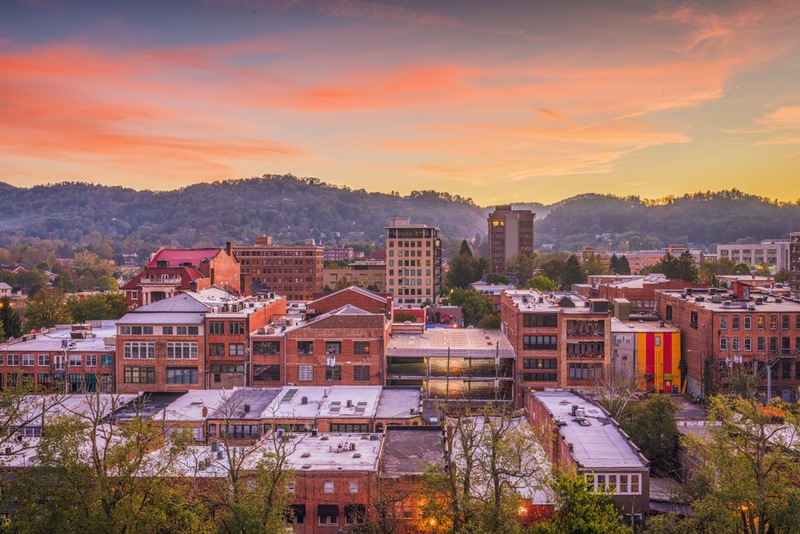☰ Menu
Menu

In the 1930s, the Great Depression racked the country and left many cities millions of dollars in debt. Asheville was no exception and found itself $8 million dollars – the equivalent of $111 million today – in the negative. However, while other cities committed to “urban renewal” by replacing their older architecture with more modern designs, Asheville chose to pay back its debts over a fifty-year period. As the rest of the world continued to change, Asheville stood still and remained a snapshot of an American boomtown during the turn of the century. This debt was not paid off until 1976 but by then, people began to realize the value of historic structures and now Asheville’s abundance of classic Art Deco architecture draws tourists to the area from the world over.
Asheville accomplished many of its architectural accomplishments during the 1920s as tourists flocked to the area, which was being marketed as a mountain version of Miami. Furthermore, the city was already renowned as a pinnacle of development at the time thanks to the establishment of the Biltmore Estate in 1889, which helped to attract more residents and invited the construction of elegant hotels. The area enjoyed a post-war boom at this time that brought on the construction of numerous residential subdivisions and iconic landmarks, such as the Pack Memorial Public Library and the Buncombe County Courthouse. Inspired by the creativity of Art Nouveau and Art Deco movements, the architecture of this time generally took more risks and stood out for its charm.
When the Great Depression struck, all but one of the banks in the area were forced to close, meaning everyone holding money with them lost every cent, and Asheville inherited the highest per capita debt burden in the entire nation. The mayor at the time, Gallatin Roberts, was indicted on charges of conspiring to misuse public funds and was forced to resign from office and other evidence surfaced of the city’s funds being grossly mismanaged. In 1936, Asheville assumed all debt of its districts and Buncombe County and agreed to pay it back in full with interest by following a strict schedule of payments. Because of this, the Asheville economy finally stabilized after years of turmoil, but there were no funds to commit towards revamping its downtown core. Thus, all of the area’s risky-yet-charming Art Deco-inspired buildings remained throughout the following decades while the debt was paid.
Rather than tearing down and rebuilding, Asheville has remained committed to developing its existing real estate. Though originally constructed at the turn of the 20th century, these buildings still appear as fresh and brilliant as though they were built this decade. The city’s historic district contains about 170 buildings, all of which together form a comprehensive collection of early 20s architecture with a unique charm that still draws tourists to the area. Referred to as a “New Age Mecca” by CBS News, Asheville stands alone as a shining jewel of classic architecture and a preservation of the area’s rich history that was all thanks to its crippling debt.